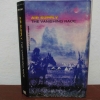Iswatun Chasanah, Indonesia; Reni Puspitasari Dwi Lestariyana, Indonesia; Sella Rohmawati, Indonesia; Yuliani Dwi Astuti, Indonesia; Yuto Wahyuto, Indonesia
Iswatun Chasanah, Reni Puspitasari Dwi Lestariyana, Sella Rohmawati, Yuliani Dwi Astuti, and Yuto Wahyuto are final-year students at Graduate School of English Language Education Program in Universitas Sebelas Maret, Surakarta, Indonesia. Their research interests lie in teacher education, language textbook evaluation, teacher professional development, and technology-enhanced language learning (TELL).
ABSTRACT
Despite the prevalence of many studies in outdoor activity, little work reports outdoor activity in the Second Language Acquisition (SLA) classroom context. To fill this void, the present study examines the student's perception of SLA. Specifically, the student perception of some SLA outdoor activity. Findings reveal that the "cognitive challenge" has been positioned as the dominant factors in learning SLA through outdoor activities. Another five elements such as students' prior knowledge, the purpose of the outdoor activity, contextual factors and the structures that support the learning process experienced similar reflection on the students learning SLA. This empirical evidence suggests that outdoor activity is an effective pedagogical tool to take into account especially in teaching SLA. This is because educational outdoor activity not only encourages pre-service teachers to incorporate their previous knowledge into contextual settings but also gives them a meaningful experience which may benefit them in the future.
Keyword: Outdoor activity, Pre-service teacher, Reflection, Second Language Acquisition
INTRODUCTION
Second language acquisition (SLA) itself is a term that in a broad sense shapes the non-native language learning after the first language (L1) that is the native language, either in a naturalistic setting or in a formal classroom setting (Miao, 2015). A variety of learning theories have been discussed in the classroom in the field of SLA to delineate and account for the second language (L2) learning process of the target language. For instance, the monitor model was constructed by Krashen in the 1970s and 1980s. It contains five hypotheses, two of them are crucial conditions necessary for SLA (Miao, 2015). One is the Input Hypothesis, which claims that when the input is one level above the current stage of the learner's interlanguage development, learners are able to acquire a second language through comprehensible input and the learning progress will be achieved. Further is the Affective Filter Hypothesis, which assigns that affective factors like motivation and self-confidence encourage acquisition when the filter is low. In sum, this theory encourages new thoughts about the relationship between diverse factors in second language acquisition and about the issues to appraise in constructing language instruction materials.
This article focuses on students' attitudes on learning SLA. Specifically, this article addresses the students' perception of some SLA outdoor activities designed to make students more engaged in learning and application of SLA theories. Thus, this study is guided by a research question as follows: How do students reflect on their experiences after participating in an outdoor SLA unit that aimed to model practical outdoor SLA activities?
CONCEPTUAL FRAMEWORK
Reflection in teacher education
Reflection is a cognitive process to reconstruct knowledge based on experiences carried out by individuals or groups (Dewey, 1933; Leijen, Valtna, Leijen, & Pedaste, 2012; Schn, 1983). Similarly, Dewey (1933) argues that reflection is a meaning-making process that enables an individual to reconstruct an understanding of the experience and build on it in future decision-making. He further states that untested experiences will lose their potential for self-growth and development (e.g. through the retention of a reflection journal). Schn (1983) points out that reflection is a means to enhance self-awareness of knowledge that describes behavioral patterns, recognition, opinions, invisible norms that are internalized and usually spontaneously performed by an individual.
In the educational context, reflection has a pivotal role in teacher professional development (Cowley, B., Heikura, T., & Ravaja, N., 2013). Prospective teachers are those who often significantly benefit from reflection practices. For example, reflection can empirically enhance critical approaches which prompt the improvement of teaching quality (Arztz & Armour-Thomas, 2001; Mayes, 2001; Oser et al., 1992). Critically and carefully thinking about a particular situation are regarded as catalysts for teachers to identify certain aspects of a particular situation, the available options, and the justification of decision making. These skills will lead to greater awareness of the alternative choices they have in the future (Husu, J., Toom, A., & Patrikainen, S., 2008). Teachers' reflection allows teachers or pre-service teachers to reconstruct understanding and knowledge that they may have forgotten or unaware of (Lynch, 2000). This understanding and knowledge will serve as critical guidance to improve the quality of their teaching in the future (Allas, R., Leijen, ., & Toom, A., 2020).
Outdoor activities in the classroom setting
A general aspect discovered in the literature is that there must be a goal for the outdoor activity, such as helping students reach a certain learning purpose (Tal, Lavie Alon, & Morag, 2014). Others have explained goals such as collecting data outside the classroom to solve a real problem (Remmen & Fryland, 2017), or giving first-hand experiences of phenomena that cannot be imitated in the classroom (Jeronen, Palmberg, & Yli-Panula, 2016; Orion, 1993). Another aspect is that outdoor activity should be a combined component of the curriculum of the classroom, which is frequently guaranteed by organizing the curriculum through classroom preparation, the outdoor activity, and then follow-up labor is done in the classroom (Jeronen et al., 2016; Morag & Tal, 2012). In addition, Orion (1993) proposes classroom preparation should encompass both the cognitive and practical components of the outdoor activity, allowing students to practice skills and knowledge required for the outside activity. Moreover, the outdoor activity itself must be student-centered, permitting learners to work in groups and serving frameworks that promote their learning process (Jeronen et al., 2016; Morag & Tal, 2012; Rebar & Enochs, 2010). Morag and Tal (2012) contend that the proponent structures should reach a balance among freedom and control of the learning process. That is, students should have some impact on the choices (e.g., selection of content, tasks, social).
DESIGN AND METHOD
Educational Outdoor activity in SLA Class
In our SLA class, the students under the study need to learn fast as materials are abundant, yet most of the materials are something new for them (e.g. input and output hypothesis, interactional hypothesis, and many other theories). To make them more actively engaged in understanding SLA theories, the instructor motivates them to do mini-projects. This project is making a poster based on SLA theory. The contents included the quotation, direction, or description displayed with the attractive picture based on the theory that we have learned. After designing SLA posters, the students were encouraged to gain some feedback from the school society where the posters would be placed. They can express their perception about the poster. Based on this feedback, the students under the study then revise the poster design. Then, the students were encouraged to present their work in front of classmates to gain some feedback from other students as well as from the instructor.
Participants of the study
The study involved five postgraduate students in the English departments in Indonesian University who took an SLA course for one semester. Those five students are participant 1, participant 2. participant 3, participant 4, participant 5. The first student participant #1 and #2 fresh graduate students who took the theory of SLA at her previous university. She is also well-understood in the basic theory of SLA. Thus, she is more interested in the SLA course in her postgraduate study. She is also an active student and puts her effort into every SLA class discussion. The next participant #3 is a graduate student who also took the theory of SLA at her previous university. She knew several basic knowledge of language acquisition but he forgot several of them as she had graduated from her undergraduate degree two years ago. Thus, she has put more effort on studying SLA in her post-graduate program. The participant number #4 is an undergraduate student who took SLA for the first time several years ago. She has experience in teaching language to her students. She has the basic knowledge as well as the practice of language acquisition. Thus, she well-understand about the students' characteristics well and puts her passion into teaching young learners. The last participant #5 used to be an English teacher for seven years. Now he focuses on his study in English as a postgraduate student. This is his first experience in an SLA classroom yet, he really enjoys studying SLA.
Data collection and analysis
After doing the SLA mini-project, the students were asked to write their reflections on their experiences. Some of the questions were designed to guide the reflection process to investigate students' attitudes toward SLA outdoor activity. The guided reflection process was designed to help students construct their own understanding of their experience during the SLA outdoor activities which they might forget or unaware of (Lych, 2020). Employing a qualitative approach, the anonymous reflection transcripts were encoded and analyzed inductively. Next, we selected the most relevant initial codes to SLA outdoor units and SLA outdoor in general to closely investigate student perceptions on SLA outdoor activities. This process is influenced by Remmen's (2020) work.
FINDINGS
Cognitive challenge
All of the participants have discussed their experiences of the implementation of outdoor learning (making a poster) in the SLA course, as illustrated by the following excerpts:
(Excerpt 1)
First, I was confused about how to elaborate between the SLA theory and practice, particularly in posters for learning English. I faced difficulties in finding the main topic or idea to put in my poster. As our focus is input hypothesis or comprehensible input. At last, I have found basic and simple activities yet bring a lot of benefit in introducing the right ways of wearing a mask. Thus, this brings huge benefits as it influences students in doing the correct ways.
(Excerpt 2)
At first, I did not expect that I could get direct impactful experience on the target language (TL) acquisition. During the process, I felt challenged to implement the SLA theories (e.g. comprehensible input hypothesis, output hypothesis, and interactional hypothesis) into a piece of poster. In the end, I am satisfied with the poster that I have made with my partner which brings out an interesting topic focused on the health protocols during the Covid-19 outbreak in secondary school areas.



![Steam and Schemes [4]](https://assets-a1.kompasiana.com/statics/2019_kompasiana/desktop/images/headline-blank-vsmall.jpg?t=t&v=100&x=100&info=meta_related)






